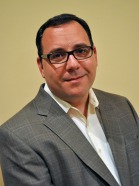Exactly how old is the technology that powers your front office?
On the sell side, it pays to do a little research and ensure that you’re running an order management system (OMS) with more years ahead of it than behind it. And while budgetary pressures may make it tempting to delay investment in new solutions, failure to regularly upgrade hardware and software could carry its own long-term costs.
OMS technology can help set a sellside broker apart from its competitors. But according to a recent global survey of brokerage firms and investment banks by TABB Group a significant percentage of boutique organizations and regional banks have not made meaningful upgrades to their equity OMS systems in more than two years – and many in more than five years.

In the meantime, operating systems, hardware and software have continued to advance at a rapid pace. For most sell-side firms, keeping up with the evolution of technology was once key to remaining competitive. Since 2008, however, budgets have tightened, many large-scale IT expansion projects have been put on hold, and an operational culture of “doing more with less” has taken root. As a result, according to TABB Group, 75 percent of private wealth brokers and 66 percent of regional investment banks are still postponing upgrades to their equity OMS technology for at least another two years. The same goes for more than a quarter of global investment banks and more than 40 percent of boutique sellside firms.
See Also:TABB Group Research Reveals Urgent Need for Sellside Investment in OMS
TABB Group adds that by not upgrading their technology, smaller organizations in particular are missing an opportunity. With less ability to offer a wide range of products, access deal flow or provide capital simply due to the nature of the boutique business, smaller firms can utilize advanced technology solutions to gain an affordable means to help “level the playing field” and compete with larger counterparts for buyside clients.
Yet the fundamental problem of working with outdated technology applies to sell-side organizations of all sizes. As with smartphones, PCs and laptops, older OMS systems will be far slower than the latest solutions, and more subject to defects and bugs. They will lack the complex event processing (CEP) power that’s necessary today for forecasting, predictive monitoring and sophisticated algorithmic capabilities; power that, in turn, relies on robust machinery and newer processing protocols.
Typically, sellside front offices may be less familiar with the term CEP than their buyside partners; nonetheless, an OMS without it puts them at a distinct disadvantage. High levels of latency and slower time to market are other important obstacles to effective order management. But the main question to ask of OMS technology is: can it process data fast enough to be effective? And, if not, can someone else’s?
Even when a firm switches vendors, or has undergone an interim upgrade with its current vendor, there is no guarantee that the supporting technology is as new, and therefore as powerful, as it should be. The fact is that technology customers rarely think to enquire about the age of equipment running behind the scenes in remote data centers. Out of sight, it seems, is out of mind.
But think about it: you wouldn’t pay the same price for a used car as a brand new model on the showroom floor. When it comes to hardware, the age may not be as immediately apparent, so you need to look under the hood and ask the right questions. After all, few consumers are happy to carry on using a slow, inferior, five-year-old smartphone, so why would it be appropriate or acceptable to run a similarly outdated trading technology solution?
One increasingly popular way to ensure continuous upgrades to OMS technology is through a managed service. A managed service approach also has the ability to help sell-side firms to cut costs, achieve economies of scale, and meet ever-shifting processing and regulatory requirements.
Again, the right questions should be asked of potential partners for a managed service, especially for a large or fast-growing sell-side firm. As well as operating the latest, most innovative technology, will the provider allow the organization to develop its capabilities rapidly and achieve all its ambitions? Is it nimble enough to support the timely move into new business areas, enabling the firm to capitalize on what could be a small window of opportunity? With the right managed service partner, all this could and should be possible.
So where does your OMS technology conversation stand? For many firms today, the aim seems to be to reduce technology spending in the short term, but sticking with the same solution can actually increase total cost of ownership. All too often, technology evaluations fail to account for the additional “soft” costs of maintaining older equipment, from higher electricity bills to wasted staff resources, to potential loss of revenue opportunities.
And ultimately, there could be an even higher price to pay. In the drive to cut costs in recent years, the sell side has strived to maintain business as usual without significant investment in technology. But increasingly, business as usual equals legacy systems – and, in turn, a growing inability to compete. And here the issue becomes more urgent, prompting organizations to ponder a new question. Once they may have asked themselves: can we afford to upgrade our technology? Now it’s more a case of: can we afford not to?
Beau Alexander is a product manager in SunGard’s brokerage business. SunGard is a vendior of order management systems and other trading technology.
The views represented in this commentary are those of its author and do not reflect the opinion of Traders Magazine or its staff. Traders Magazine welcomes reader feedback on this column and on all issues relevant to the institutional trading community. Please send your comments to Traderseditorial@sourcemedia.com



